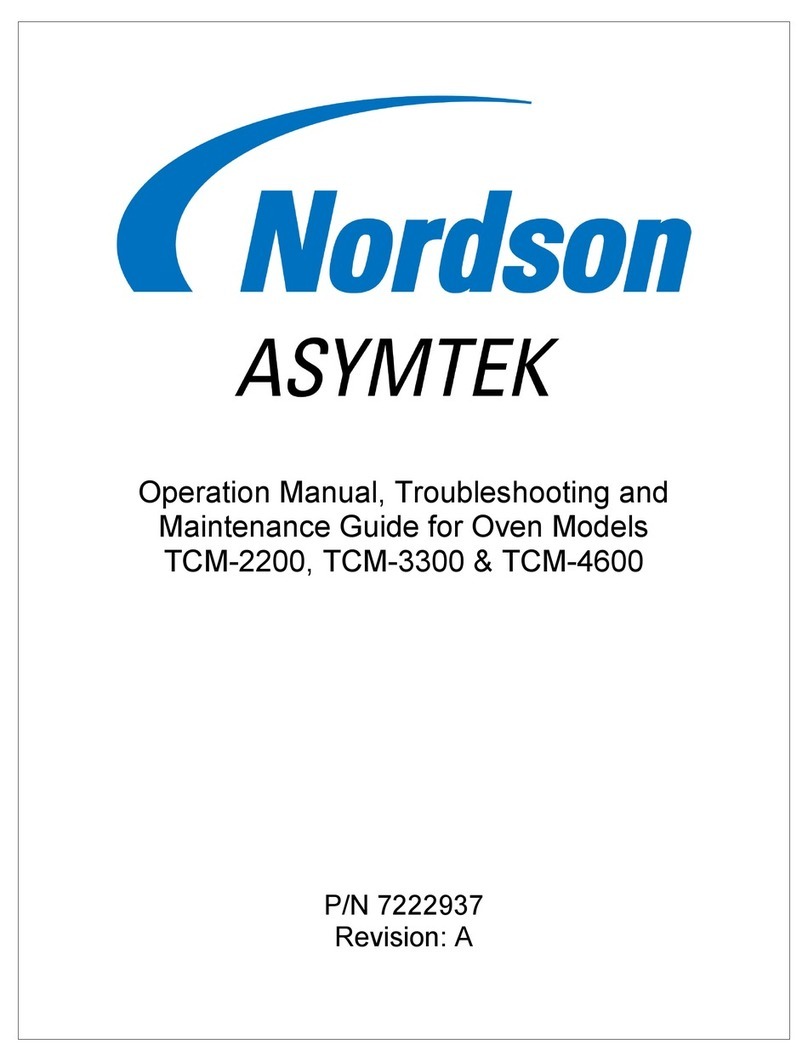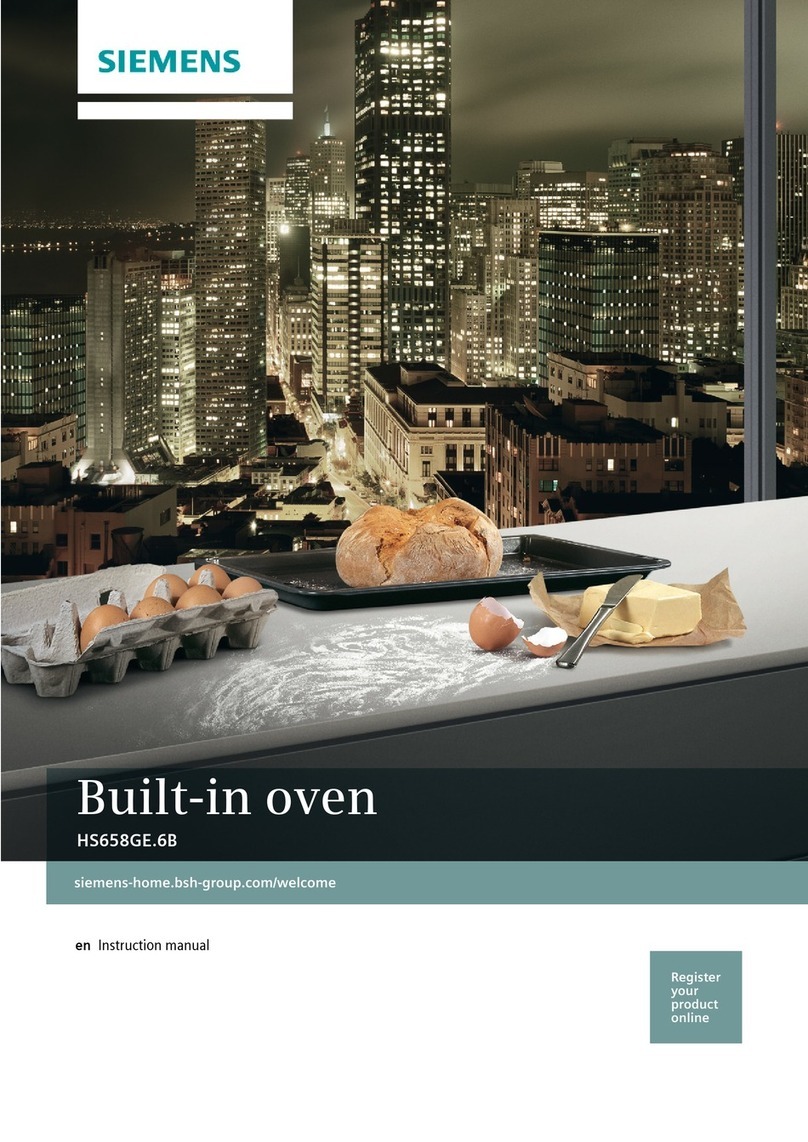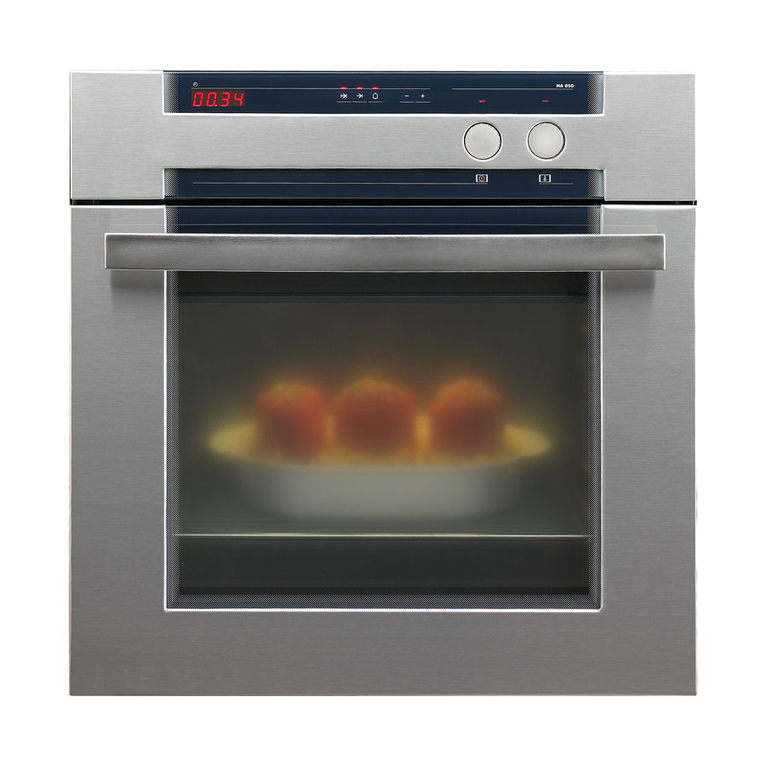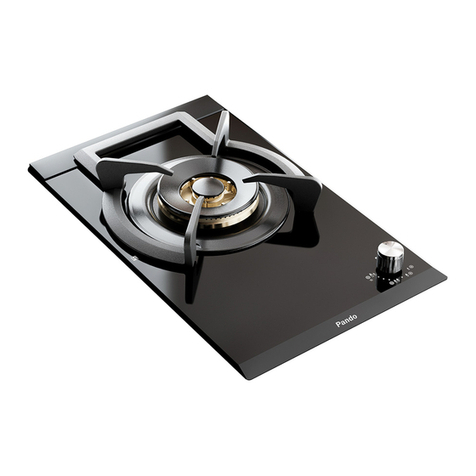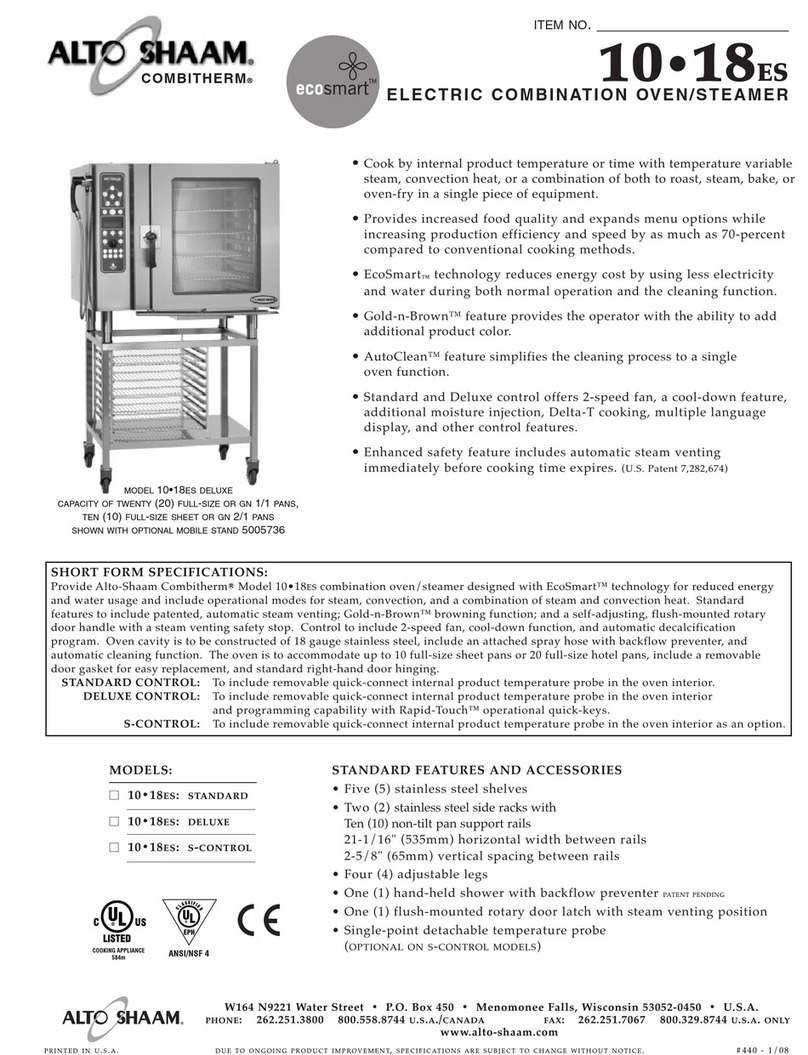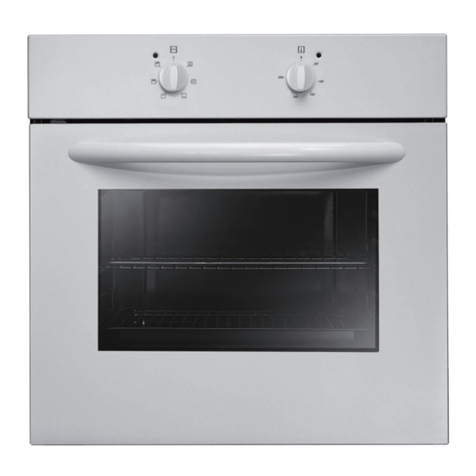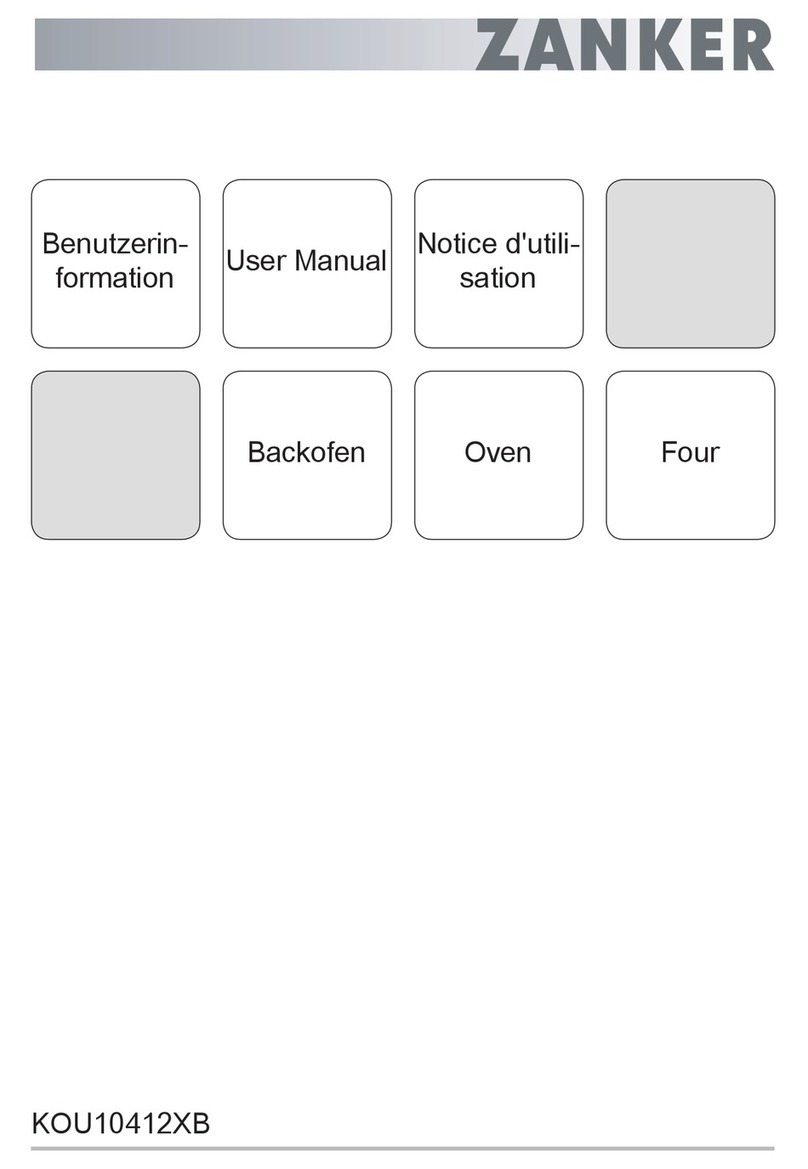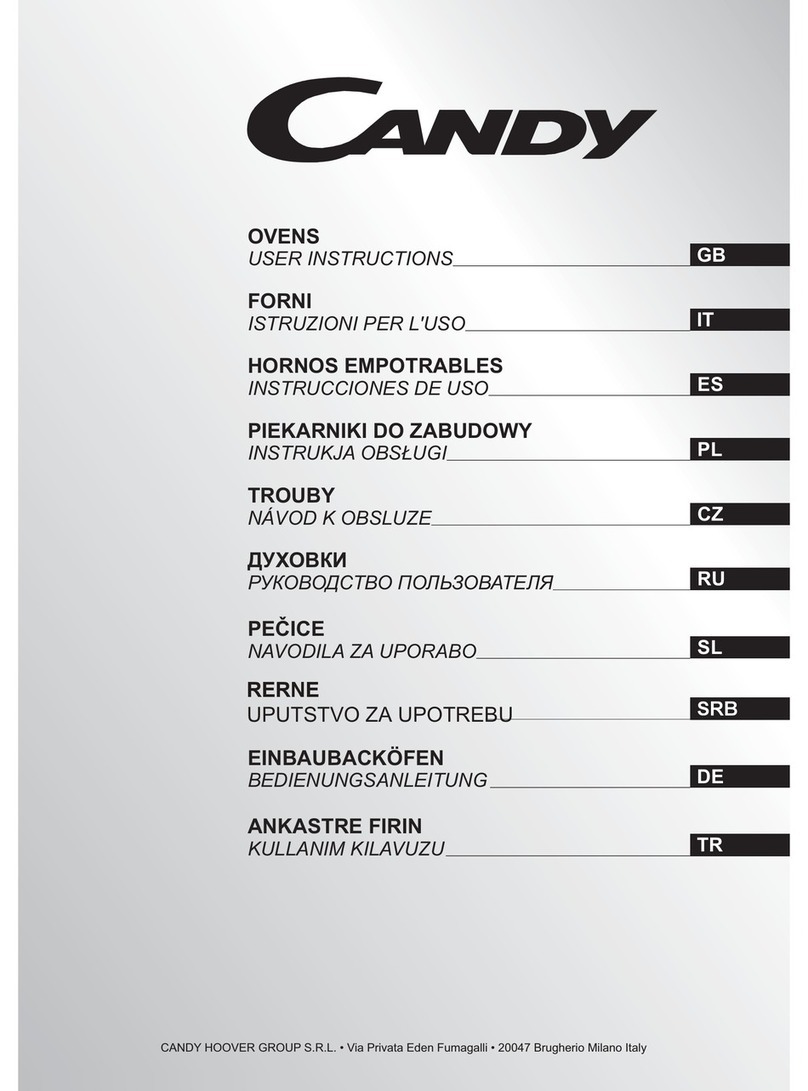Nordson ASYMTEK TC V3 User manual

Conformal Curing Oven
TC V3
Maintenance Manual
P/N 7211568


P/N 7211568, Revision C English Translation based on French P/N 7211572, Rev. B ©2010
NOTICE
This is a Nordson ASYMTEK publication, which is protected by copyright. Original copyright date 2006.
No part of this document may be photocopied, reproduced, or translated to another language without the
prior written consent of Nordson ASYMTEK. The information contained in this publication is subject to
change without notice.
Manuals on the Internet
For the convenience of Nordson ASYMTEK customers and field service representatives, copies of
Nordson ASYMTEK manuals can be downloaded from:
www.nordsonasymtek.com
Contact Us
Nordson ASYMTEK welcomes requests for information, comments, and inquiries about its products.
Please contact us using the information below:
Address 2762 Loker Avenue West
Carlsbad, CA 92010-6603
USA
Toll Free:
1-800-ASYMTEK (1-800-279-6835)
Tel: +1-760-431-1919
Fax: +1-760-431-2678
E-mail: info@nordsonasymtek.com
Website: www.nordsonasymtek.com
Technical Support
USA: 1-800-ASYMTEK (1-800-279-6835)
Other regions: www.nordsonasymtek.com Tech
Support
Trademarks
Asymtek®, Century®, and Easy Coat®
Nordson Electronics Systems
are registered trademarks of Nordson ASYMTEK.
®
Microsoft
is a registered trademark of Nordson Corporation.
®, Windows®, and Windows XP ®are registered trademarks of Microsoft Corporation.


Table of Contents i
Table of Contents
1Introduction ...................................................................................................................................... 1-1
Overview............................................................................................................................................. 1-1
Safety First ......................................................................................................................................... 1-1
Hazardous Materials .......................................................................................................................... 1-1
2Safety................................................................................................................................................. 2-1
Overview............................................................................................................................................. 2-1
Facility Requirements......................................................................................................................... 2-1
Basic Safety Precautions and Practices ............................................................................................ 2-2
Safety of Personnel .................................................................................................................... 2-2
Preventing Cure Module and Workpiece Damage..................................................................... 2-2
Earthquake Precautions ..................................................................................................................... 2-3
Movement................................................................................................................................... 2-3
Safety Warning Labels ....................................................................................................................... 2-3
Emergency Shutdown ........................................................................................................................ 2-3
Emergency Shutdown Recovery ................................................................................................ 2-3
Lockout of Electrical Energy............................................................................................................... 2-5
Interlock ...................................................................................................................................... 2-5
3Maintenance...................................................................................................................................... 3-1
Overview............................................................................................................................................. 3-1
Safety First ......................................................................................................................................... 3-1
Recordkeeping ................................................................................................................................... 3-1
Periodic Maintenance......................................................................................................................... 3-1
Preventive Maintenance..................................................................................................................... 3-2
Maintenance Procedures ................................................................................................................... 3-3
Conveyor Torque Limiter Adjustment......................................................................................... 3-3
Conveyor Incremental Encoder Adjustment............................................................................... 3-4
Conveyor Chain Tension Adjustment......................................................................................... 3-5
Transmission Chain Tension Adjustment................................................................................... 3-6
Adjustment of the Rail Parallelism.............................................................................................. 3-7
Thermocouple Replacement .................................................................................................... 3-10
Resistor Replacement .............................................................................................................. 3-11
Setting of Upstream/Downstream Board Counter Cell (optional) ............................................3-14
Adjustment of the Dropped Board Detection Cell (optional) .................................................... 3-15
Auto-Tune Procedure ............................................................................................................... 3-16
4Troubleshooting ............................................................................................................................... 4-1
Overview............................................................................................................................................. 4-1
Safety First ......................................................................................................................................... 4-1
Troubleshooting Alarms ..................................................................................................................... 4-1
5Parts List ........................................................................................................................................... 5-1
Level 1 – Consumable Parts .............................................................................................................. 5-1
Level 2 – Recommended Parts.......................................................................................................... 5-1
Level 3 - Long Lead-Time Parts ......................................................................................................... 5-2

ii Table of Contents
Table of Figures
Figure 3-1 Torque Limiter Adjustment ..................................................................................................... 3-3
Figure 3-2 Conveyor Counter Cell Location............................................................................................. 3-4
Figure 3-3 Conveyor Chain Location ....................................................................................................... 3-5
Figure 3-4 Transmission Chain Location ................................................................................................. 3-6
Figure 3-5 Conveyor Input ....................................................................................................................... 3-7
Figure 3-6 Conveyor Output .................................................................................................................... 3-7
Figure 3-7 Conveyor Transmission Gear................................................................................................. 3-8
Figure 3-8 Input Rail................................................................................................................................. 3-8
Figure 3-9 Mid-Section Rail...................................................................................................................... 3-8
Figure 3-10 Output Rail............................................................................................................................ 3-9
Figure 3-11 Conveyor Rail Screws .......................................................................................................... 3-9
Figure 3-12 Thermocouple..................................................................................................................... 3-10
Figure 3-13 Collar .................................................................................................................................. 3-11
Figure 3-14 Retaining Nut ...................................................................................................................... 3-11
Figure 3-15 Stuffing Box ........................................................................................................................ 3-12
Figure 3-16 Joint .................................................................................................................................... 3-12
Figure 3-17 Remount Joint..................................................................................................................... 3-12
Figure 3-18 Remount Mask.................................................................................................................... 3-12
Figure 3-19 Maintenance Part Screw .................................................................................................... 3-13
Figure 3-20 Maintenance Part Clip ........................................................................................................ 3-13
Figure 3-21 Remove Vitro-Ceramic Glass ............................................................................................. 3-13
Figure 3-22 Bride Location..................................................................................................................... 3-13
Figure 3-23 Counter Cell........................................................................................................................ 3-14
Figure 3-24 Signal Indicator ................................................................................................................... 3-14
Figure 3-25 Emitter Cell ........................................................................................................................... 3-15
Figure 3-26 Receiver Cell ........................................................................................................................ 3-15
Figure 3-27 Setpoint Box ....................................................................................................................... 3-16
Figure 3-28 Reg Z1 Button..................................................................................................................... 3-16
Figure 3-29 Graphic Visualization of Zone............................................................................................. 3-17
Figure 4-1 Troubleshooting Alarms.......................................................................................................... 4-1
Figure 5-1 Consumable, wearing parts, to be kept in-stock on production site....................................... 5-1
Figure 5-2 Parts recommended by the equipment manufacturer to be kept in-stock.............................. 5-1
Figure 5-3 Parts with a long procurement lead-time or for software update............................................ 5-2
Table of Tables
Table 3-1 Preventive Maintenance .......................................................................................................... 3-2
Table 3-2 Optional Encoders ................................................................................................................... 3-4
Table 3-3 Regulator ............................................................................................................................... 3-17

Introduction 1-1
1 Introduction
Overview
This manual covers maintenance procedures necessary for the preventive and corrective maintenance of
the TC V3 Conformal Curing Oven.
WARNING! Maintenance and troubleshooting procedures should only be performed by
trained service technicians.
Safety First
Before performing any maintenance or troubleshooting procedures, it is important that you thoroughly
read the TC V3 Operations Manual. Obey all written safety warnings in the Safety section, the warning
labels affixed to your curing oven, and your facility safety practices.
Hazardous Materials
Some procedures may involve the use of hazardous materials. To prevent injury to personnel, follow all
Federal, State, and local regulations, facility safety practices, and the material manufacturer's Material
Safety Data Sheet (MSDS) recommendations.
NOTE Consult safety and disposal precautions on the material manufacturer's Material Safety
Data Sheet (MSDS) for all materials used with the cure module.


Safety 2-1
2 Safety
Overview
Operation of the TC V3 Conformal Curing Oven involves heat, electrical power, mechanical devices, and
the use of hazardous materials. It is essential that every person servicing or operating the Cure Module
fully understands all hazards, risks, and safety precautions described in this section. When properly
operated and maintained, the Cure Module will be safe and reliable.
This section is intended to provide basic safety information necessary for operating, maintaining, and
servicing your TC V3 Cure Module. This section covers the following topics:
•
Facility Requirements
•
Safety Warning Labels
•
Basic Safety Precautions and Practices
•
Emergency Shutdown
•
Earthquake Precautions
•
Lockout of Electrical Energy
Use of this equipment in ways other than those described in the documentation supplied with the
equipment may result in injury to persons or damage to property.
To further optimize safe operation, maintenance, and servicing of the TC V3, precautions and
recommended practices are included with the procedures throughout this manual.
WARNING! Safety is considered a joint responsibility between the original equipment
manufacturer and the end-user (owner). Safety precautions and practices should
be in accordance with governing laws and regulations, and facility requirements
in addition to those recommended in this manual.
WARNING! CAUTION!
Facility Requirements
Unsafe equipment conditions can result in personal injury or property damage.
Failure to properly operate and maintain the Cure module in accordance with this
manual may jeopardize the built-in safety features.
To ensure optimal performance and safety, it is necessary to install the Cure Module in a facility that
meets the necessary requirements. Refer to the Operations Manual for more information.

2-2 Safety
Basic Safety Precautions and Practices
The following precautions and practices are recommended during Cure Module operation and
maintenance.
Safety of Personnel
•Only trained personnel should be permitted to perform operation, maintenance, service, and
troubleshooting procedures.
•All personnel working on or near the Cure Module should know the location of all electrical
power supply sources.
•Lock/tagout procedures must be performed before service or maintenance work is done on
the Cure Module (refer to the "Lockout of Electrical Energy").
•Immediately push the red Emergency Off (EMO
•If in a confined room, ensure adequate and uninterrupted air ventilation, heating, and cooling
to meet environmental stress limits of personnel and the Cure Module.
) button if personnel are in danger of
being injured.
•Follow MSDS recommendations for the proper handling, cleanup, storage, and disposal of
hazardous materials. Know the MSDS recommendations for treatment of injury resulting from
exposure to hazardous materials.
Preventing Cure Module and Workpiece Damage
•Immediately push the EMO
•Use standard Electrostatic Discharge (ESD) precautions when working near ESD-sensitive
components. Always wear a grounding strap and connect it to the ESD ground before
handling work pieces.
button if the Cure Module or a workpiece is in danger of
being damaged.
•Follow all recommended system maintenance procedures as outlined in the Maintenance
Manual.
•Ensure that no air intake or exhaust grilles are blocked while the Cure Module is in operation.
WARNING! CAUTION!
Failure to comply with any of the safety recommendations could cause serious
injury to personnel and/or damage to the equipment.

Safety 2-3
Earthquake Precautions
In the event of an earthquake, the cure module must be secured to prevent movement that could cause
injury to personnel and damage to the equipment and facility. Each Cure Module leveler (foot) should be
anchored to the floor. to the TC V3 Operations Manual for Installation Procedures.
WARNING! To prevent injury during an earthquake, all personnel should follow facility
earthquake safety guidelines.
Movement
The TC V3 Cure Module is structurally designed to withstand seismic activity in accordance with industry
standards. To prevent system movement during an earthquake, each leveler should be anchored to the
floor with two bolts. The anchor joint should be able to withstand at least 100 kg (220 lbs.) of pullout force.
Refer to the TC V3 Operations Manual for installation procedures.
Safety Warning Labels
Warning labels on your TC V3 Cure Module point out areas where personnel must use extreme caution to
prevent injury or damage.
WARNING! CAUTION!
Comply with all safety warning labels or serious injury to personnel and/or
damage to the equipment will occur. Worn or damaged labels should be replaced
with new labels having the same part number.
Emergency Shutdown
The TC V3 Cure Module features an EMO
The
button that the operator or service technician can use to
immediately halt all system operations in case of emergency. This feature helps prevent injury to
personnel and damage to the Cure Module and work pieces being processed.
EMO
Emergency Shutdown Recovery
button is located on the front control panel of the cure module. The EMO cuts power to all
system components.
WARNING! CAUTION!
Do not restart the curing operation until the condition causing the emergency
shutdown has been remedied. Failure to comply could cause serious injury to
personnel and/or damage to the equipment.
To recover after an Emergency Shutdown:
1. Clear the Conveyor of all work pieces.
2. Lock out/tag out all system power. Refer to the TC V3 Operations Manual for lockout/tagout
procedures.
3. Locate and remedy the cause of the emergency shutdown. Refer to the Troubleshooting
section for more information.

2-4 Safety
4. Reset the main circuit breaker inside the electronics enclosure if it has been tripped.
5. Turn the red EMO button clockwise until it pops back into position.
6. Remove all warning tags and locking devices.
7. Restart the Cure Module.
8. Wait at least 30 seconds then push the reset button. Failure to do so could cause problems
with the motor speed controller.
9. Open the Alarm window and reset alarms on the PLC. Refer to the TC V3 Operations Manual
for alarm reset procedures.
10. Click on the Start button on the Main Menu.
11. Wait for temperature stabilization before running production. The alarm sounds at start up.

Safety 2-5
Lockout of Electrical Energy
TC V3 Cure Module electrical components have been designed in accordance with industry-wide safety
standards. However, precautions must still be taken whenever personnel may be exposed to the
unexpected power-up of the equipment or release of hazardous electrical, ultraviolet, or microwave
energy. Lock out and tag out electrical power before performing service or maintenance work on the Cure
Module.
WARNING! All personnel working on or near the Cure Module should know the location of all
electrical power supply sources.
WARNING! CAUTION!
Failure to
Interlock
follow lockout/tagout procedures could cause serious injury to
personnel and/or damage to the equipment.
The Interlock is an electronic connection that immediately cuts power to any motion and pneumatic
actuators. If the hood is opened during production, the interlock is activated and all curing activity
immediately stops to protect the operator from injury.


Maintenance 3-1
3 Maintenance
Overview
Performing the recommended maintenance and service procedures increases the life of your Cure
module and ensures high quality performance for every production run.
Safety First
Before you proceed with TC V3 maintenance, make sure you understand the precautions in the Safety
section and adhere to the precautions during the performance of maintenance procedures.
CAUTION! Maintenance and service should be performed by trained personnel only.
Recordkeeping
At a minimum, the following information should be recorded in the cure module records:
•Date
•Procedure type
•Technician name
•Part/serial numbers of replaced parts
•Post-procedure functional test results
Periodic Maintenance
Performing periodic maintenance procedures increases system life and ensures high quality curing
performance for every production run.
WARNING! Unless otherwise specified, the Cure Module should be shut down while
performing maintenance or troubleshooting procedures. Refer to “System
Shutdown” in the TC V3 Operations Manual.

3-2 Maintenance
Preventive Maintenance
Table 3-1 Preventive Maintenance
Recommended
Frequency Maintenance Procedure Instructions
WEEKLY –
120 h of Production Grease chains
The chains must not become dry. For proper chain
lubrication, use only PERMA SO14-type oil (high
temperature oil).
NOTE Using any other kind of oil or grease can
damage the conveyor.
WEEKLY –
120 h of Production Clean ceramic glasses
Clean the ceramic glasses each week. Depending on your
level of production, it may be necessary to clean them
more often. It is important to clean all varnish residues from
the bottom glasses to ensure a good thermal transfer.
MONTHLY -
600 h of production
Check reproducibility of the
thermal cycle
Use a temperature recorder (Datapak, KIK, M.O.L.E. etc.)
and a PCB (or other production item) equipped with
thermocouples.
NOTE The results of this control must match the
profiles previously obtained or the
specifications given by the varnish
provider.
MONTHLY -
600 h of production
Check exhaust security
control
Stop the exhaust or disconnect the pipe. The oven must go
into Alarm mode. If the oven doesn’t stop, check the
functioning of the air flow sensor.
THREE MONTH -
1800 h of production
Check control of speed
displayed
While the conveyor is running, use a stopwatch and
measuring tape to determine how long it takes the
conveyor to move a specified distance. Calculate the speed
in cm/min. The calculated speed must be near the speed
displayed on the screen (+/- 1 cm/min).
NOTE Make sure that the measuring equipment
used (watch and measuring tape) are
calibrated.
SIX MONTH -
3600 h of production
Check Emergency Stop
buttons
Push one of the emergency stop buttons. Check that the
production stops.
To restart the equipment, follow the procedure described in
the TC V3 Operations Manual.
NOTE Check the emergency stop buttons
consecutively.
SIX MONTH -
3600 h of production Check conveyor gears
When disassembling the conveyor chains, check the
motion of each gear. If the gear does not turn freely, it must
be changed.
SIX MONTH -
3600 h of production Check wear of the rails
When removing the conveyor chains, check the rails for
wear. When the chains are reassembled, they must slide
freely along each sliding rail (forward and backward).
ANNUAL -
7200 h of production Check rails parallelism Measure the parallelism between the fixed rail and the
mobile rail. It must not exceed +/- 0.5mm.

Maintenance 3-3
Maintenance Procedures
CAUTION!
Safety
Maintenance procedures should only be performed by trained service
technicians. Refer to the section for more information.
WARNING! Unless otherwise specified, the Cure Module should be shut down while
performing maintenance or troubleshooting procedures. Refer to “System
Shutdown” in the TC V3 Operations Manual.
Conveyor Torque Limiter Adjustment
To adjust the conveyor torque limiter:
1. Turn the power off by moving the Main Switch to the OFF position.
2. Remove the access cover at the output of the conveyor and set aside.
NOTE The torque limiter is mounted on the motor shaft, behind the motor ( ).
Figure 3-1 Torque Limiter Adjustment
3. Unscrew the latch-tightening screw with an Allen wrench ( ).
4. Adjust the limiter by turning the adjustment ring to allow space to turn the gear by hand.
5. Tighten the latch-tightening screw.
6. Turn the power back on by moving the Main Switch to the ON position.
7. Before starting a production, activate the conveyor movement. Make sure the gear on the
motor shaft does not slip.
8. Replace the access cover.
Allen Wrench
Gear
Torque Limiter
Latch-tightening
Screw
Adjustment Ring

3-4 Maintenance
Conveyor Incremental Encoder Adjustment
The Conveyor Incremental Encoder returns an accurate measurement of conveyor speed to the PLC. In
the TC oven, the encoder uses a close loop control to ensure the accuracy of the conveyor speed.
Replace the encoder if it is damaged or the speed measurement is inaccurate.
Various conveyor speeds can be used depending on the encoder installed. Table 3-2 lists the available
encoder options.
Table 3-2 Optional Encoders
CONVEYOR SPEED ENCODER PART NUMBER DESIGNATION
80-400 050865 Encoder 360 pulses
160-800 (STANDARD) 050864 Encoder 200 pulses
300-1500 049615 Encoder 100 pulses
CAUTION!
To replace the Conveyor Incremental Encoder:
For ovens built before May 2006, the speed measurement is controlled by an
inductive sensor (VIT’s part number: 007546)
1. Remove the right hood in front of the machine, at the exit of the oven.
2. Fix the elastic couplings on the encoder and on the shaft.
3. Attach the encoder to the support bracket on the frame.
4. Plug the encoder jack into the female jack.
5. Turn the conveyor on and ensure that the encoder and shaft are properly aligned.
6. Verify the speed value on the control screen is correct.
Figure 3-2 Conveyor Counter Cell Location
7. Check again to make sure the cell detects each tooth of the gear.
8. Recalibrate the close loop of the conveyor and check that the real speed of the conveyor is
equal to the calculated speed by the PLC.
9. Replace the access cover.
Support Bracket
Shaft
Encoder
Elastic Coupling

Maintenance 3-5
Conveyor Chain Tension Adjustment
To adjust the tension of the conveyor chains:
1. Turn the power off by moving the Main Switch to the OFF position.
2. Remove the access cover at the input of the conveyor and set aside.
3. Using an adjustable wrench, adjust the tension of the spring by turning the adjustment nut
(Figure 3-3).
4. Make the same adjustment on the other side of the conveyor.
Figure 3-3 Conveyor Chain Location
5. Turn the power on by moving the Main Switch to the ON position.
6. Before starting a production, activate the conveyor movement and check that the conveyor
chain turns without any jerk or noise.
7. Replace the access cover.
CAUTION! During production (oven in heating) check that the spring is still in tension.
Conveyor Chain
Spring
Adjustment Nut

3-6 Maintenance
Transmission Chain Tension Adjustment
To adjust the tension of the transmission chain:
1. Turn the power off by moving the Main Switch to the OFF position.
2. Remove the access cover at the output of the conveyor and set aside.
3. Adjust the tension of the transmission chain by turning the chain tightener with a wrench
(Figure 3-4).
Figure 3-4 Transmission Chain Location
4. Turn the power on by moving the Main Switch to the ON position.
5. Before starting a production, activate the conveyor movement and check that the
transmission chain turns without any jerk or noise.
6. Replace the access cover.
Chain
Tightener
Transmission
Chain
Table of contents
Other Nordson ASYMTEK Oven manuals
Popular Oven manuals by other brands
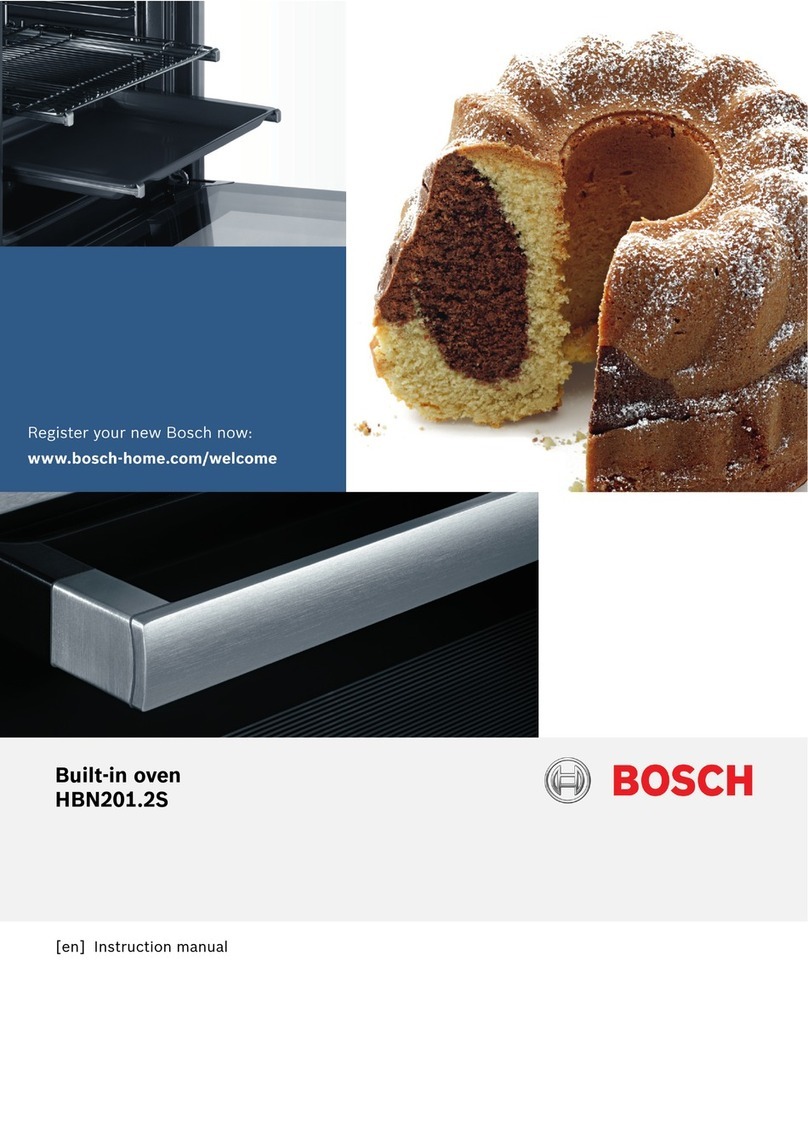
Bosch
Bosch HBN201 2S Series instruction manual
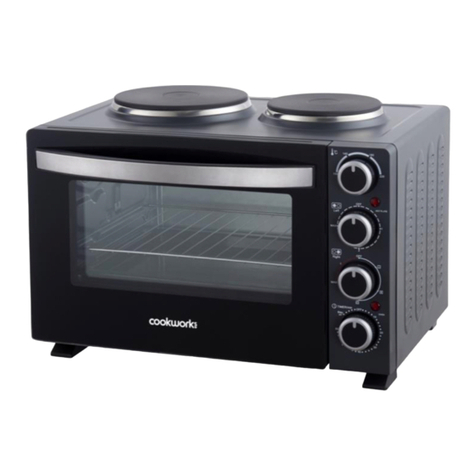
Cookworks
Cookworks KH-M28RC-E1DKH Care & instruction manual
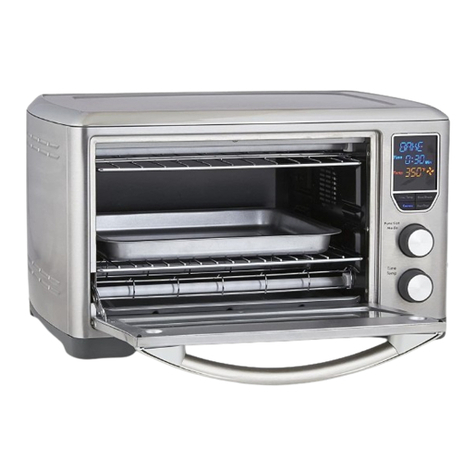
Kenmore
Kenmore 100.76771410 Use & care guide
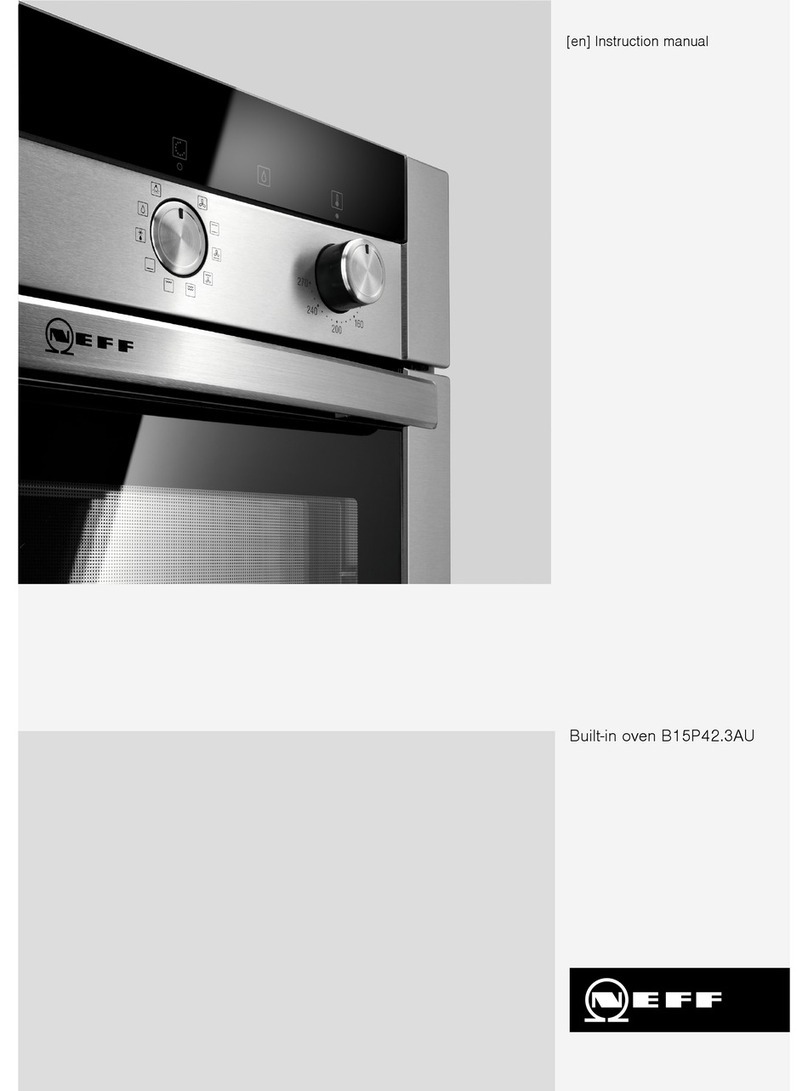
NEFF
NEFF IQ335 instruction manual

NEFF
NEFF N90 C24FS31 0B Series User manual and installation instructions
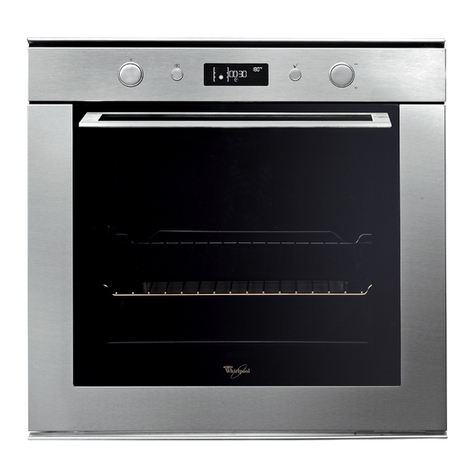
Whirlpool
Whirlpool AKZM 756/IX User and maintenance manual
